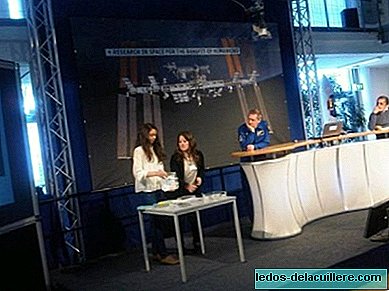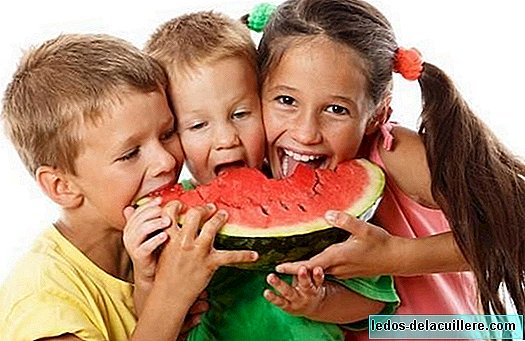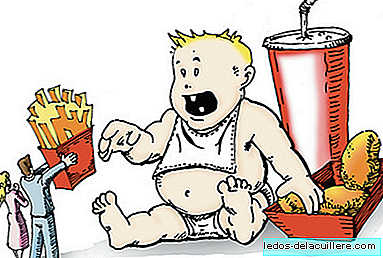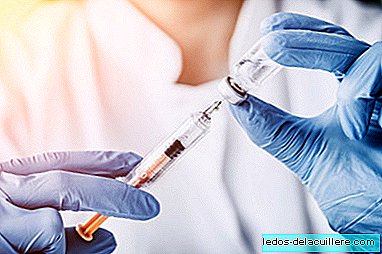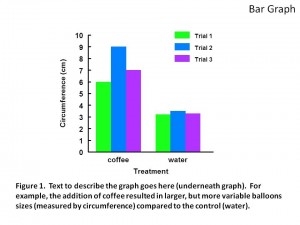It is very hot. If we are not near the sea or with a pool nearby, home evenings can be very long. I propose, to spend a fun afternoon a science workshop where we are going to play and learn with water, balloons and soft drinks.
We are going to need tap water, containers, balloons, half-needles, a cola, preferably coke light, and mints.
Part of the experiments are done at home, but for some of them we will have to go out to the street or to the garden. I assure you a lot of fun, smiling and exhausted children but also many things learned. Let's go with it.
Geiser with soda
Do not be scared, the explosions are harmless, but they will attract the attention of children and anyone who passes through the street. We need a large bottle of light coke and candy. Ideally, each child has their own bottle and is a surprise, although if the child is scary, you can let him know that he is prepared to run away and that they will see something very impressive.
We uncover the bottles and prepare four or five candies for each. It is important that children drop them into the bottle at a time and move away immediately if they do not want to get wet.
When introducing the candies, its rough surface breaks the surface tension of the liquid and causes the carbonic gas in the liquid to be released very quickly, leaving as a geyser. They will love the emotion and it will cost you not to repeat it.
Balloons that swell by themselves
We must warn them not to get too close to the fire. We put a balloon in the mouth of a glass bottle and we put it in a water bath, in a pot with water on the fire. When the air inside the bottle warms up, The balloon, although not fully inflated, rises, as the air expands and it makes it clear that where there was no air before now if there is, which will lead us to talk about the effect of heat on materials.
Balloons that do not explode
For this experiment we will need balloons and needles. We may have to help children if their manual dexterity does not allow them to do it alone and be careful not to puncture or play with the needles.
First we will swell the balloons and prick them with the needles. They will explode strongly. Then, other equal balloons, we will cross them with the needle but slowly and introducing it through the ends, where the balloon is less tense. When closing around the needle the air will not come out and the balloons will not explode, then being able to stay like balloon skewers for a while until they will gradually yield.
We will do another experiment with balloons that do not explode. One will fill it with air and another with a little water. When the first one approaches the fire, it will explode, but the second one does not. The reason is that water, to change state when heated, absorbs energy and does not allow the balloon to heat up so quickly. You have to warn the children not to be scared of the noise and of course, keep them away from the fire.
Glasses that do not fall
We can also make a glass fly, although it seems impossible. The reason is that, by covering the hot glass, with the hot air inside, with the balloon, and immediately putting it in cold water, it causes the contained air to decrease in temperature and occupy less volume, attaching the balloon a little inside to fill the void left by the air, so that the glass is firmly attached to the globe and we can lift it without falling.
If we did days before the experiment of the egg that is put in the bottle, the children will understand the effect produced in the air by the different temperatures, although they will continue to be amazed to see the force with which both are held together.
The fact that they do not understand all the explanations of physics that we give them should not worry us, adapting them to their language, but letting this sow the seed of astonishment and the desire to know more about nature and its laws.
Water Balloons Battle
Ready to get wet? Calm down, first let's see this video in which you can see perfectly how the water balloon explodes in slow motion. If we have a good camera, we can do it directly and, after seeing it explode, watch it slowly, because it is really striking what happens but our eye does not perceive.
Then we go down to the street, with a good supply of balloons already full of water at home if there is no fountain nearby. We will do some exercises first. We start with throws from the same point, so that they experience how the strength of their arms, the throwing position and gravity affects the parable of the fall, even with vertical throws.
We experiment with the resistance to breakage according to how full the balloon is, the hardness or roughness of the impact surface, the given force and the speed of falling in height or in horizontal shots falling into a parabola.
And then, of course, we chased each other by throwing balloons and getting wet all running!
Fun and cool, guaranteed and also a lot recreational science with these workshops with balloons and water. Are you going to resist?


